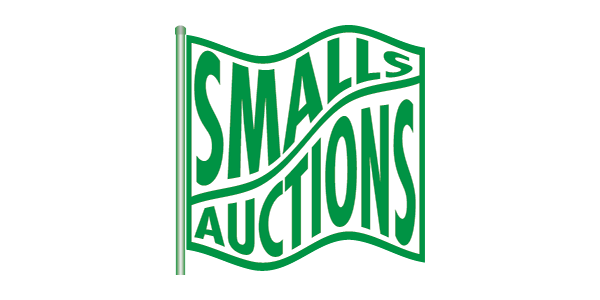Auction 149 Highlights
Welcome to Smalls Auctions Sale 149.
In this penultimate Sale to our 150th Auction we have pulled out all stops to offer you some quality collector and investment items.
The highlight is undoubtedly a New South Wales 1813 Holey Dollar which is rare in any grade. This coin is counter-struck on a Mexico Charles IIII 1803 8 Reales and is an affordable example of this great Australian rarity. Of the 39,908 struck by order of Governor Macquarie in 1813 only about three hundred have survived, and if you take out the one hundred or so locked away in museums and institutional collections this leaves roughly two hundred coins available for collectors and investors. It is a must for any serious collector of Australian coins or Australiana.
There is also an example of Australia’s iconic 1930 Penny in far better than average grade. Traditionally our most popular coin rarity, this coin has been conservatively graded at good Very Fine / Extremely Fine. Australian collectors have traditionally rated their pennies on the wear that first occurs on the band of the crown worn by King George V. This is the high point on the obverse and this coin with six strong pearls and a fully separated centre diamond places it in an elite category of surviving coins. It is likely to achieve a third-party grade of XF40 putting it safely in the top twenty-five coins known.
We also have a superb Australian 1935 Proof Halfpenny which is as fresh as the day it was struck. These coins were issued loose and so often come with evidence of handling. Sometimes they are dark from heavy oxidisation or have taken on a purple hue where they have reacted over time with the skin oils deposited in the surfaces by a careless collector. Other times they have unsightly fingerprints or will have surface hairline scratches where the coin has been badly cleaned with a tissue or cloth. This coin has an even muted colour which you would expect from a coin struck 86 years ago and, except for a few minor carbon spots, which are not punished by third-party grading firms, it is perfect.
We have also included a number of rare Van Diemen’s Land Commissariat Notes. If you are looking for a banknote equivalent to a Holey Dollar then this is it. These notes were issued in Colonial Australia by the Commissariat offices in the penal colonies of New South Wales and Van Diemen’s Land and underpinned all commercial transactions. The ultimate ‘payer’ was the Treasury in London, but before they were cashed out they were often traded to and fro between locals as a form of currency. The notes were issued against various sub offices in the Treasury that were responsible for different functions of the colonies, and we have on offer one of the six surviving examples of a Van Diemen’s Land Commissariat note drawn on the office of the Agent for the Colony of N.(ew) S.(outh) Wales. Van Diemen’s Land was under the direct control of New South Wales, and this note for £25' payable to Thomas Massey represented half his annual salary in his important role as Superintendent for Convicts at Port Dalrymple. A second note for £25' payable to Mr T(homas) Y(Ardley) Lowes at his Majesty’s Treasury Whitehall is equally intriguing. Lowes arrived in Hobart in 1823 as a free settler and established a distillery in 1824. From the outset he was politically active and in 1824 he "was a signatory to a memorial to the King soliciting separation of Van Diemen's Land from New South Wales and its independence as a colony." (ADB) It is signed on back by the recipient Thos Y Lowes. These are not as well known as the Holey Dollar but are equally important in capturing Australia’s Colonial history.
Another item of interest is a double set of Australia’s Paper Decimal Banknotes. The collection is bookended by a consecutive pair of 1966 ‘Coombs - Wilson’ $1's and a consecutive pair of ‘Fraser-Cole’ $100 which were the last paper notes to be replaced with the new issue polymer notes in 1996. Central to the collection is a pristine pair of ‘Coombs – Randall’ $20's which are considered the jewel in the crown of circulating decimal notes. Only three prefixes covering 2.2 million notes or $440,000 were ever released and it has long been speculated that the remainder were withdrawn when a further $500,000 of unrecovered notes were paid out in a ransom to Mr Brown, the infamous QANTAS bomber. Rumour has it that Peter Macari aka Mr Brown was a deep sea diver who sunk the ransom in a 44-gallon drum near Wedding Cake Island off Sydney’s Coogee Beach. Macari was deported on his release from Gaol and so was unable to collect the ransom he had secreted away. The pair of ‘Coombs – Randall’ $20 alone catalogue at over AUD $20,000 and there are another 164 notes in the set. At a starting bid of $20,000 it is not to be missed.
These are but a few of the exciting items in the Sale and we hope you find something to satisfy your collecting lust.
Smalls Auctions





